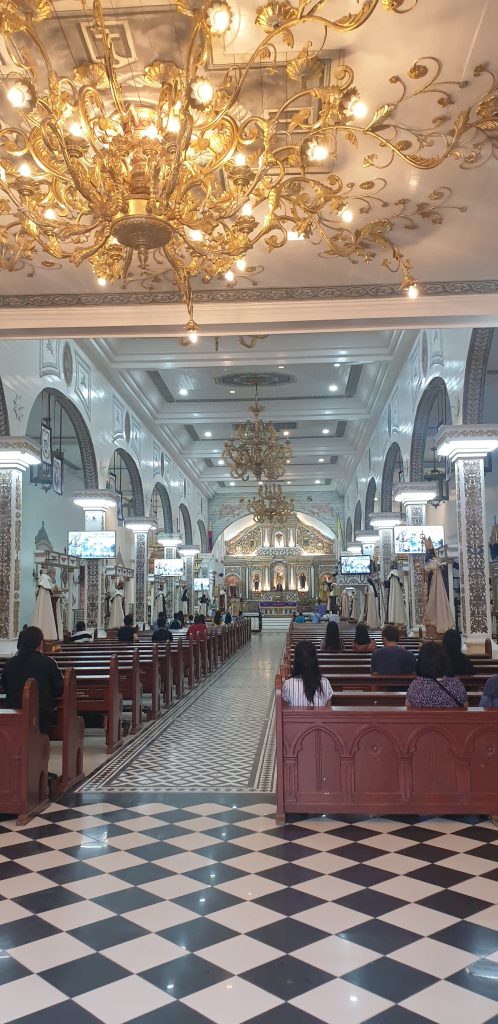
Learning about history and knowing one’s roots strengthens a person’s sense of nationalism. The Department of Tourism (DOT) encourages local travelers to explore the country’s historical destinations as it is highly important to make the time to not only read about one’s history, but also visit places that have significant importance to historical events, and for Filipinos, an important historical site is the Malolos Heritage District.
“Among the many reasons to love the Philippines, is our country’s rich history. The love for country has pushed our ancestors to fight strongly and passionately for our independence, for the preservation of our culture, for our people. The Philippines is filled with many historical sites like the Malolos Heritage District that I urge everyone to visit. Knowing our history makes enjoying our beautiful destinations more meaningful because without our ancestors’ bravery, we won’t be free to explore these.” said Tourism Chief Christina Garcia Frasco

Located in the heart of Malolos, Bulacan, this historical site was declared a National Historical Landmark and Heritage Town in 2001 by then National Historical Institute (todays National Historical Commission of the Philippines). Also referred to as Historic Town Center of Malolos, it serves as a captivating link to the Philippines’ storied past. More popularly known as the “birthplace” of the First Philippine Republic as well as the Malolos Constitution, the former Philippine capital likewise showcases houses and structures in turn-of-the century architectural style. Aside from being widely photographed, travelers visiting the heritage district will also learn and relieve history by exploring its streets.
A Walk-Through History
Walking around the Malolos Heritage District, travelers will be amazed by the historical structures that line the streets. Make sure to visit the following important historical sites while you’re there:
Barasoain Church
Known as the “Cradle of Democracy of the East”, Barasoain Church is the site of the First Philippine Congress or the Malolos Congress as well as where the Malolos Constitution was signed. It was a place of refuge for many soldiers as well as victims of war.
Malolos Cathedral
Malolos served as the first republican capital of the Philippines from 1898 to 1899. President Emilio Aguinaldo used the cathedral’s convent as a Presidential Palace.
Kalayaan Tree
The living witness to the short-lived Malolos Republic, a monument was erected in the area to mark its significance as a historical meeting place of Filipino revolutionaries.
Instituto Mujeres
Located along Santo Niño Street, the Instituto Mujeres served as night school for the “Women of Malolos”, who strongly advocated education for women. Make sure to also visit the Alberta Uitangcoy-Santos House to learn more about these women who boldly petitioned for educational reform.
Heritage Houses
See various Spanish and American-era ancestral houses along Pariancillo and Santo Niño streets like the Don Erastro Cervantes House, Don Jose Bautista House, Dr. Luis Santos House and what’s left of the Casa de Tribunal de Malolos.
Experience more of Malolos
Aside from Malolos’ rich history, travelers will also experience its colorful culture and delightful gastronomical treasures.
Fabulous Festivals
Fiesta ng Republica – held in January, this weeklong celebration, commemorates history via theatrical presentation of historical vignettes.
Santo Niño de Malolos Festival – the grandest celebration in Central Luzon dedicated to the Holy Child Jesus, the festival is held every last Sunday of January.
Sinakulo Festival – Malolos as a Sinakulo capital of the Philipinnes, various Sinakulista groups perform Sinakulo in different form from traditional to contemporary to modern style
Pista ng Barihan – also known as Pista ng Santisima Trinidad, this celebration originated in the 19th century and is held every Trinity Sunday.
Singkaban Festival – held during Linggo ng Bulacan (September 8 to 15), the festival highlights Malolos’ arts and culture. Travelers will get to witness performances of Malolos’ traditional arts which include “Balagtasan”, “Kundiman”, as well as folk dances.
Sweet Treats
Pastillas de Leche – a widely popular sweet and creamy soft candy made from milk and sugar, make sure to try this local dessert at Malolos, which makes use of the unique, now rare, “pabalat” (intricate paper pattern) to wrap this sweet.
Pinaso – another sweet and creamy dessert, it is made with eggs, milk, and biscuits, topped with caramelized sugar for an indulgent experience.
Gurgurya – a crunchy, fried dough with a sweet glaze, this is a popular treat in Malolos during the Spanish colonial period.
Aside from sweets, travelers will also enjoy other delicious dishes in Malolos, including those that are thought to be favorites by local heroes such as arroz ala cubana, puto karamba of Goyo, Pochero ni Plaridel, pindang na kalabaw ni Eusebio Roque, tempura ni Ponce and Hamon ng Tagumpay side by side with other heirloom dishes.
Malolos is just one of Bulacan’s interesting destinations that travelers will enjoy visiting. The DOT actively works with the province to highlight the many tourism gems of the province like Biak na Bato National Park in San Miguel, Kaytitinga Falls and Mt. Balagbag in City of San Jose Del Monte. Bulacan is also listed as one of the 20 provinces that will have a Tourist Rest Area this year. The Tourist Rest Area is an award-winning project spearheaded by the DOT to ensure that tourists will have an enjoyable stay in the country. Since the project was launched last year, several Tourist Rest Areas have already been built in various provinces around the country namely in Cebu, Palawan, Bukidnon, and Davao.